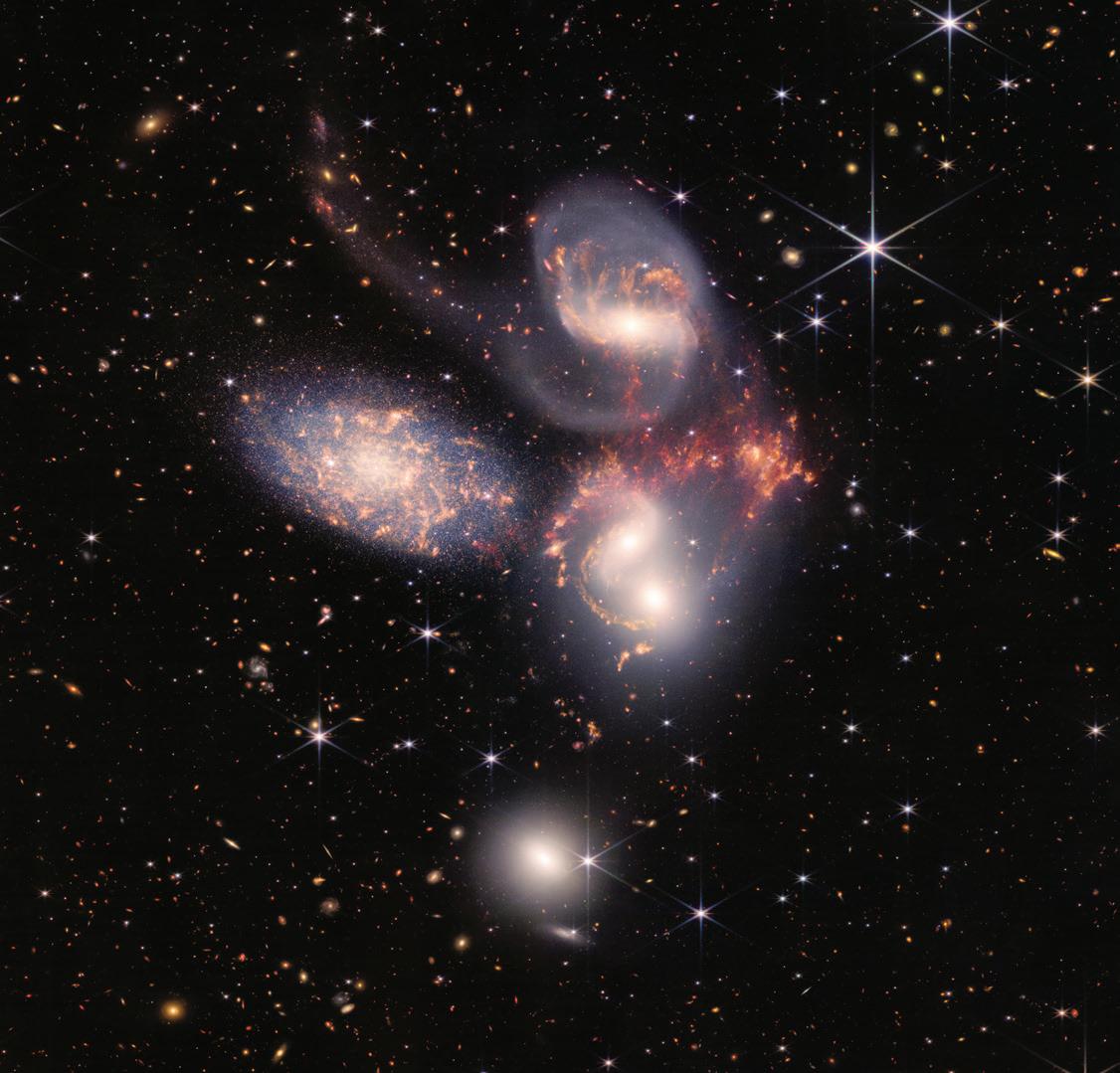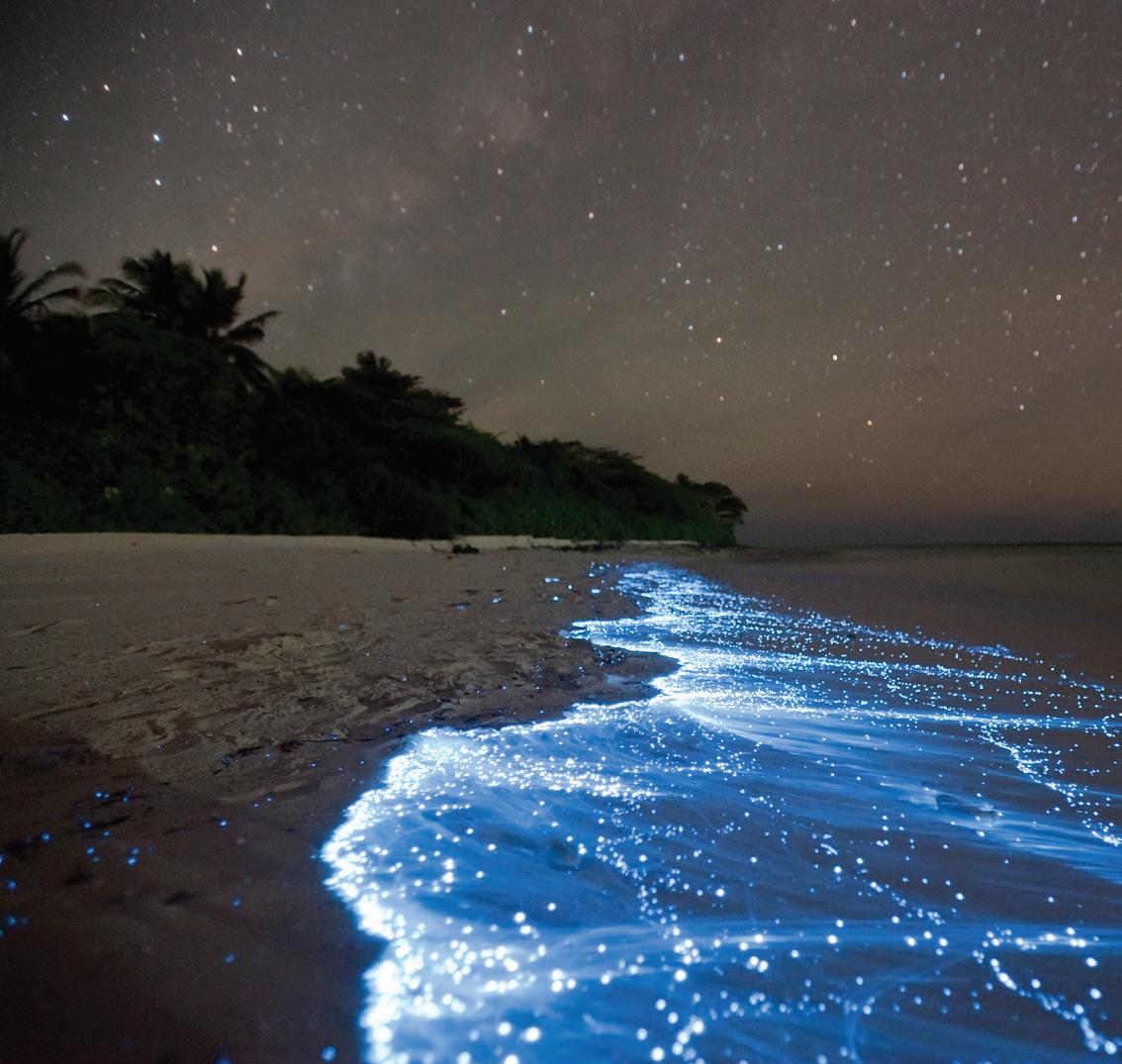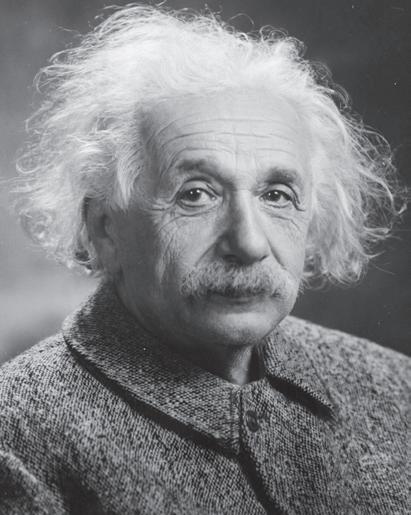













at , we reflect on light.
Across many cultures, light is a central feature of winter holiday traditions. From the use of bonfires in ancient solstice rituals to the decorative and commemorative lights that are familiar in our lives today, forms of light brighten homes and communities at a time when daylight is short, and connect us to our childhoods, family, cultures and traditions.
Light is at once austere and complex, familiar and enigmatic. It is a phenomenon that USC Dornsife experts explore broadly — from the physical properties of light to its prominent place in our collective stories.
I hope your holiday season is filled with warmth and illumination!
Amber D. Miller Dean, USC Dornsife College of Letters, Arts and Sciences Anna H. Bing Dean’s Chair
Studying
light is key to understanding the universe and solving its mysteries. Exceptionally sensitive instruments, like the recently launched James Webb Space Telescope, enable astrophysicists to see the first stars and galaxies forming out of the darkness of the early universe over 13.5 billion years ago. “This amazing instrument will push the boundaries of what we know, revealing baby galaxies and shedding light on how they form. It will also reveal secrets of mysterious dark matter,” says Vera Gluscevic, Gabilan Assistant Professor of Physics and Astronomy.

GALAXY CLUSTER SMACS 0723; IMAGE COURTESY OF NASA, ESA, CSA, STSCI
BIOLUMINESCENCE

Myriad organisms — from bacteria to vampire squid — use biochemistry to emit light to help them hunt and hide, attract mates and startle foes. “The glow of bioluminescent marine microbes, which can cause the ocean surface to sparkle, seems magical,” says John Heidelberg, professor of biological sciences and environmental studies and director of the USC Wrigley Marine Science Center. “It’s like standing amid the stars in a Mojave winter sky.”
Now all it takes is the flick of a switch, but for thousands of years we relied on flickering candles, oil or gas lamps to vanquish darkness
— humanity’s primordial dread. Romans left lamps at the graves of the dead to illuminate the boundary between worlds. By the Middle Ages, artificial light was also used as divine medicine. “In exchange for a miracle or in expectation of one, pilgrims often left candles at a saint’s shrine. Some were molded to the size or even the shape of an ailing body part,” says Jay Rubenstein, chair, Van Hunnick History Department.
Eighteenth-century

Enlightenment thinkers revolutionized science and emphasized reason and progress. They used the imagery of light to describe this process of expanding human understanding, says Kelsey Rubin-Detlev, assistant professor of Slavic languages and literatures. “They believed that, if we learn to think for ourselves, we can dispel the darkness of prejudice that prevents us from seeing others’ suffering and from realizing it’s possible to overcome it.”
Plants convert sunlight to food through photosynthesis, but humans also use light. Sunlight helps convert cholesterol to vitamin D. “It also boosts serotonin levels in the brain, enabling us to stay emotionally regulated and feel good,” says Jonathan Stange, assistant professor of psychology and psychiatry and the behavioral sciences. “Regular sunlight exposure may also help prevent and improve certain kinds of depression, like seasonal affective disorder.”
Light plays myriad tricks: Cats’ eyes, mirrors and the moon are reflectors that do not produce the light that appears to come from them; the sun and moon appear larger and closer when near the horizon point — an effect still unexplained.
“Nature offers us spectacular light shows,” says Vahé Peroomian, professor (teaching) of physics and astronomy. “The Northern Lights — an atmospheric phenomenon that has dazzled us for millennia — is the result of electrically charged particles from space entering the Earth’s upper atmosphere at speed while rainbows are caused by reflection, refraction and dispersion of light in water droplets.”

Einstein showed that nothing can travel faster than light, but is there any hope of overcoming this limit and traveling to the stars? “Wormholes might offer a shortcut,” says Nicholas Warner, professor of physics and astronomy and mathematics. Theoretically possible though likely very unstable, he says, wormholes still respect the speed of light barrier, but create short bridges across vast distances of space-time.

PHOTOSYNTHESIS IMAGE: ISTOCK; EINSTEIN PHOTO: WIKIMEDIA COMMONS
CANDLE IMAGE: ISTOCK; YOUNG GIRL READING BY JEAN-HONORÉ FRAGONARD
UNSPLASH/ JOHANNES GROLL PHOTO: DOUG PERRINE TRICK OF THE LIGHT
IMAGE:
Air/Light, the international literary journal published quarterly online by USC Dornsife’s Department of English, takes its name from a description of the particular qualities of Southern California light — sometimes crisp and clear, so everything can be seen with clarity. And sometimes diffused and hazy, so everything seems obfuscated. “The name is a wonderful metaphor for the complexity of Los Angeles,” says Air/Light editor David Ulin, professor of the practice of English.

For artists, light can be both subject and tool, as in the dramatic spotlights of Caravaggio’s religious canvases, Vermeer’s gentle lighting of domestic scenes or the endless, magic glittering of Yayoi Kusama’s mirrored halls. “Light is illuminating and dazzling, it draws the eye into a painting, creates shadows and contours — even warms or chills,” says Kate Flint, Provost Professor of Art History and English.

PHOTO: ALAMY/ NATHANIEL NOIR IMAGE: ISTOCK























